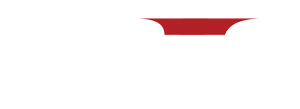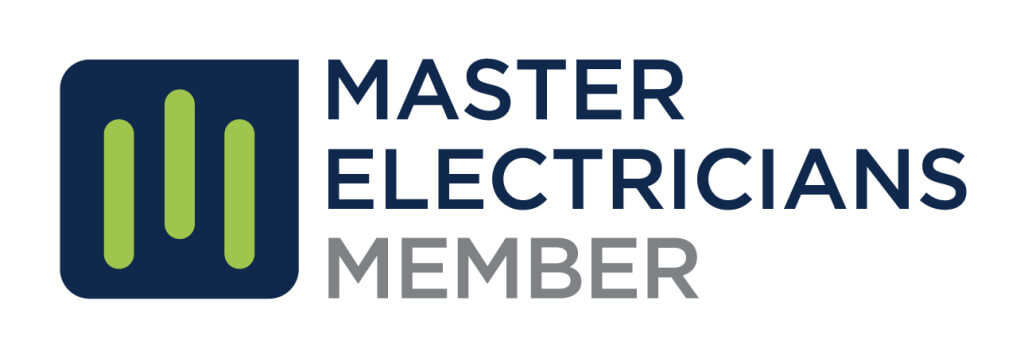- Working smoke alarms
Ensure your home has smoke alarms that are correctly positioned, operational, regularly tested and compliant. Early warning systems can save lives and your home should a fire break out. - Keep your stove and oven areas clear
Never leave anything flammable near hot surfaces in the kitchen, especially your stove and oven spaces. Keep tea towels, cleaning cloths, placemats, curtains and cookbooks all well away from this zone. Try to avoid resting anything on hotplates even when they are turned off. - Check electrical cords
Frayed and broken charging and electrical cords can easily become a hazard as they heat up. Ensure you replace or remove immediately. Try to avoid charging phones and devices on material surfaces – again the charging packs and cords can heat up and pose a fire risk. - Keep fire extinguishers and blankets handy
Ensure you keep an in-date fire extinguisher and a fire blanket in handy places such as the kitchen. Make sure everyone in your home knows where they are located and remove any obstructions that make them hard to reach in an emergency. - Store flammable products safely
Store your household cleaners and beauty products away from heat to avoid combustion. Cool, dark cupboards with constant temperatures are ideal. This also applies to products stored in your garage and shed. Metal spaces heat up far quicker and can pose a real risk if not managed with care. - Be cautious with flames
When using candles, diffusers, fireplaces, BBQs and fire-pits make sure you keep an eye on them at all times. It is also a good idea to keep any flammable items well away from these areas and extinguish before going to bed or leaving the room/area.
Celebrate Easter in style with some homemade goodies that are all about chocolate and Easter.
- Crowd favourite Hot Cross Buns via maggiebeer.com.au
- A fun festive flair on Easter with Easter Nests via countdown.co.nz
- It’s not Easter with out delicious Cadbury Creme Egg Cupcakes via mybakingaddiction.com
- Use leftover Easter treats for a scrumptious egg-plosion of Rainbow Easter Egg Rocky Road via goodfood.com
- When you’re asleep you won’t smell smoke from a fire
- Electrical appliances cause 40% of house fires
- You are twice as likely to die in a house fire without a working smoke alarm
- The most common house fire cause is from unattended cooking followed by faulty electrical appliances, heaters, cigarettes and candles
- Many household fires are caused by someone making a mistake – a moment of carelessness, forgetfulness or neglect
- Children under five and people aged 65 years and over are twice as likely to get caught in a house fire
- Many people do not have a fire safety escape plan, fire extinguisher or blanket for use in case of an emergency
It is important that in the event of a fire (or emergency) you have a safety checklist and escape plan. Take the time to put both in place with your family, friends or boarders – it could potentially save a life.
A home fire safety checklist consists of a to-do list to prevent your home from catching on fire. These measures should be applied on a daily basis to help reduce the risk overall. The to-do list may include items such as times to regularly clean, dust, check and maintain smoke alarms throughout the home. It may also note general safety actions such as keeping flammable items away from heat sources, being present when there are lit flames (candles, fires, BBQs etc.), safe storage of combustible goods and good practices in the kitchen when cooking and cleaning.
Read our blog to see tips on creating an Escape plan for your home.
In just two minutes, a fire can become lift-threatening. In five minutes, a residence can be engulfed in flames. Scary isn’t it! This doesn’t give you much time to think about how to get yourself or family member to safety. Taking the time to an escape plan in place with your family, friends or boarders could potentially save a life.
An Escape Plan will ensure you know the best escape locations around your home with an active course of action should you become trapped by fire. When designing an escape plan, everyone in the home should be included. Make sure everyone knows the plan of escape as well as where to meet should you become separated during a fire emergency.
You should consider escape locations, meeting places and the best times to call for help. This plan can also be used for other emergency situations. If you have children, helping them know what to do can assist in managing panic and fear should the worst ever happen.
How do you make a fire plan? Here are a few elements to consider when making a plan:
- Draw a floor plan so you can review ways to escape from each room
- Keep door and window keys easily accessible
- Try to keep all exits clear
- Decide on a meeting point that is a safe distance from the house (letterbox, clothesline, at a neighbours home, a nearby street sign)
- Remind everyone that when you get out – you stay out. Never return into a burning building
- Practice! It is essential that everyone in the household knows what to do in the event of a Fire.
And remember to get down low, as smoke can cause damage to the lungs and death. If your clothes catch on fire, STOP, DROP and ROLL.
A scary statistic has been shared via a news article about Adelaide home owners not getting compliant on smoke alarms. New research shows that 1 in 5 homes in South Australia are not following the law by failing to install smoke alarms in their properties.
There are so many cases where smoke alarms have saved lives. In many of instances it alerted them from their slumber to exit the house safely. In other incidences, occupants simple had no idea that a fire has even start in their property until the smoke alarm sounds.
Shockingly, last year 98 out of 528 house fires did not have smoke alarms installed at their property, another 2 per cent had working smoke alarms that were disabled.
Not only do smoke alarms keep loved ones safe by giving you that vital time to jump in to action, smoke alarms are a necessary investment to help protect your livelihood.
If your curious about what your child/children would do if faced with a house fire, put them to the test! Do you think you’ll like the outcome?
It’s important for children to learn about the dangers of fire, in all circumstances. There are many different ways to bring this to a child’s attention. Information is power, if we can teach children what to do in these situations, they will be able to protect themselves if you are separated.
Here are some essential points:
- First things first, Teach them your escape plan. Children can be overwhelmed with fear, a step by step plan of what to do is key for a child’s survival when faced with uncommon happenings.
- Practice makes perfect, it’s not enough to talk about it once. Children’s brains are contently growing with new information. Ideally hanging up your escape plan and practising the plan at least twice a year.
- When there’s no way out. In the instance of getting trapped by fire, the most important thing to remember is to close the door. Put bedding or cloth under the door to block off any smoke that will seep through.
- Wait for help, Firefighters have breathing mask that can look intimidating to children. Make sure that they know what the firefighter gear looks like, so they don’t get scared and hide.
- Stop, drop and roll. A key point to save your life, when caught on fire. Most kids first instincts will be to run away which will only make it worse.
- Once out stay out – Call 000 – stay safe. Your life can’t be replaced.
There are two main smoke alarms used in homes, Photoelectric & Ionisation. The main difference between the two types of alarms are how the alarms detect fire.
Ionisation smoke alarms have a small amount of radioactive material. When a fire rapidly starts it will give off little smoke, however, the smoke particles in the air will disrupt the low, steady electrical current produced by radioactive particles and trigger the detector’s alarm. Yes, Ionisation alarms are great for fires that may start in the kitchen or laundry, although it’s not recommended to install them in such places, as this will create false alarms.
Photoelectric smoke alarms on the other hand uses a beam of light to detect smoky, smouldering fires. Once smoke covers/blocks the light from bouncing to the sensor chamber, it will sound the alarm. These particular fires are resulted in slower burning conditions that produce large amounts of smoke, most common in the home environment. If it isn’t cleaned and dust is allowed to build up, it will give off false alarms.
Studies have shown that photoelectric typically responds to smoke/smoulder within three to five minutes – Ionisation alarms can take up to twenty minutes or more, which can make escape more difficult. Therefore authorities recommend photoelectric smoke alarms in homes.
In Australia it’s common to find a BBQ in many backyards. Nothing beats the taste, but it is important to ensure consideration goes into keeping your home safe.
- Never use gas cylinders indoors or in confined spaces
- Ensure the hose connection and hose are on tight with no leaks (never test for a leak with a flame – use soapy water instead)
- Dispose of out dated or empty gas cylinders safely
- Keep BBQs clean to reduce fire hazards especially from left over fat and grease
- An adult should be in charge of a lit BBQ at all times
- Make sure you turn your BBQ off properly after use – never leave it turned on while unattended
How much does the service cost my Agency?
The service is at NO COST to your agency.
How much work is involved for my Agency?
The service has been designed by Licensed Real Estate agents to minimize the amount of work for your office. SATS will provide all the information you need to implement the system and even do all the printing for you, at no cost, to ensure all your landlords are aware of their responsibilities in regards to smoke alarms.
What does the annual fee to the landlord include?
The fee is per property not per alarm and includes an initial visit to the property to complete a survey and make sure that all alarms are positioned correctly, within their service life and are approved by Australian Standards. The technician will then clean and test alarms. Batteries are tested or replaced as required and marked with an inspection sticker at every visit. We will continue to visit the property throughout the year at change of tenancies and lease renewals at no additional cost and complete a full service. Your office will be issued a Certificate of Compliance within two hours after each visit.
Is this a compulsory service?
At this stage, it is not compulsory in all states of Australia, however it is recommended that you offer this service to your landlords and have them either accept the service or decline the service to meet your duty of care. If they decline the service they indemnify your office and take on the responsibility themselves in regards to smoke alarms.
As an agent what should I do in regards to smoke alarms?
In all instances, we recommend that you engage the services of a specialist Smoke Alarm service provider to complete the testing of all alarms because most agencies are not insured, qualified or equipped to test smoke alarms. On your ingoing, outgoing and routine inspections you should visibly check and record whether there is a smoke alarm present.
Is it true that all smoke alarms have an expiry date?
It is true! All smoke alarms 9volt and 240volt hard wired alarms must have an expiry date to meet Australian standards. Depending on make and model this is sometimes noted as a manufacture date, an expiry date or a manufacture code. We carry this information for all 96 approved smoke alarms in Australia. NB. Smoke alarms must be replaced once they exceed their service life. Failure to do so may result in an alarm not working in a fire situation or in insurance claim being declined.
What is the best smoke alarm for my property?
The best smoke alarm for your property depends on the type of property and which state it is located in.
We only use Photoelectric Smoke Alarms, however the type and model depends on the type of property and which state it is located in. If you have any questions relating to your states requirements you should contact SATS.
Can landlords undertake their own inspections and servicing of smoke alarms in their owned rental properties?
In some states they can, however they are not a specialist Smoke Alarm Service Provider. The complexities of positioning alarms to ensure the property complies with the Building Code of Australia and having the knowledge to ensure the smoke alarms are fully functional, can be difficult for the average landlord. For instance, can the landlord check that the power supply is actually connected to the 240v alarm? Can the landlord check the decibel output of the alarm and that it is in the required range? Can the landlord check the manufacture and/or expiry date of the alarm?
There could be significant outcomes for the landlord if a fire should occur and the property is not compliant or the alarms have not been serviced in accordance with the legislation. Additionally, the landlords insurance on the property may be void if a failure to comply with all legislation is proven. It is far better risk management for a landlord to employ a specialist to ensure compliance and to protect their valuable asset and the lives of the occupants.
Are faulty smoke alarms removed from the property?
Faulty smoke alarms are removed from the property. The only time a faulty smoke alarm is not removed, is when its removal would leave significant and obvious paint damage (e.g. If the ceiling has been painted white, but behind the smoke alarm it hasn’t been painted and is yellow). In this case a working smoke alarm would be installed in a suitable location to ensure that the property remains compliant.
Are expired smoke alarms removed from the property?
Expired smoke alarms are removed from the property. The only time an expired smoke alarm is not removed is when its removal would leave significant and obvious paint damage (e.g. If the ceiling has been painted white, but behind the smoke alarm it hasn’t been painted and is yellow).

Electrical Licenses:
NSW 264079C | ACT 2014969
SA PGE 324794 | QLD 90708
Office Hours
| Monday | 8am – 5pm |
| Tuesday | 8am – 5pm |
| Wednesday | 8am – 5pm |
| Thursday | 8am – 5pm |
| Friday | 8am – 5pm |
| Sat / Sun | Closed |

